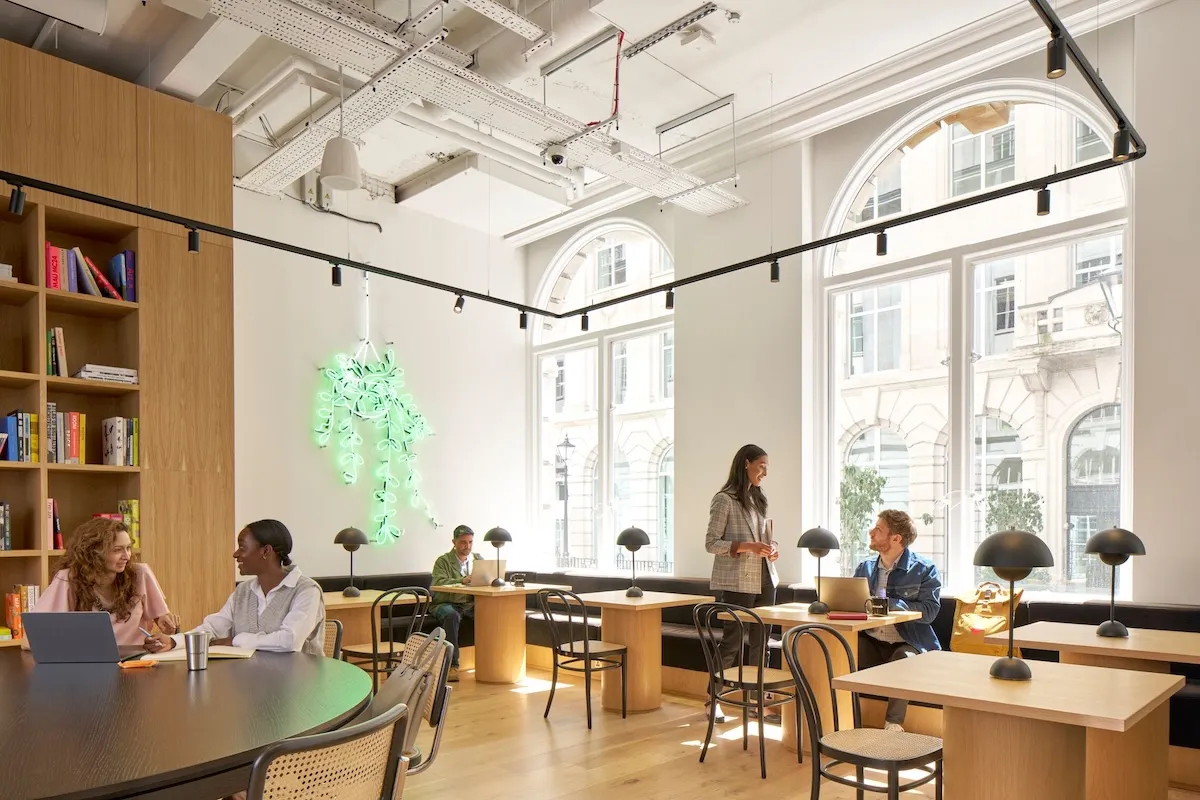Productive group brainstorming can really feel like a win: The team leaves feeling energized, accomplished, and excited for the next steps. Effective brainstorming techniques can help achieve this. On the other hand, when a brainstorm session misses—whether it feels unproductive, repetitive, or negative—the team may collectively feel uninspired.
There are a lot of factors that can derail a brainstorm, but here are some of the common reasons a brainstorming session goes wrong:
- Unbalanced conversation. Extroverted personalities and quick thinkers dominate the conversation, leaving no time for other teammates to contribute.
- The anchoring effect. Participants converge on the first few ideas that are brought up in a brainstorm, which stifles new ideas and prevents the team from moving on.
- Awkward silence. Participants are unprepared, leaving you with an hour full of painful silence or—worse yet—a meeting that is cut short to put everyone out of their misery.
- Disconnected teams. Remote working during the pandemic requires brainstorming through videoconferencing. The inherent awkwardness combined with the tendency of people to talk over one another makes it hard to capture the creative energy that comes from having everyone in one room.
Implementing the following group brainstorming techniques can help you avoid these common woes and instead bring your team together to yield the perfect idea.
10 effective team brainstorming techniques
Brainstorms typically have three steps: idea capture, discussion and critique, and selection. The following strategies will help you and your team, whether you’re in person or remote, through all three stages.
1. Brainwriting
In this nonverbal brainstorming method, everyone writes down three ideas that relate to the topic of the brainstorm. Allow about four to six minutes for this process. Then everyone passes their ideas to the person on their right (or left, whichever you prefer), who will then build off of the ideas, adding bullet points or creative strategies. If your team is remote, they can use a communications platform like Slack to share ideas. After another few minutes, everyone will pass the piece of paper again until it makes it all the way around the table. Once the ideas have made it around the circle, the group discusses them and decides which ideas are best to pursue.
This technique can alleviate two of the biggest brainstorm pitfalls—unbalanced conversation and the anchoring effect—by ensuring that everyone has the opportunity to contribute and eliminating the bias toward the first idea.
2. Rapid ideation
In rapid ideation, everyone writes down as many ideas as possible in a set amount of time before any ideas are discussed, critiqued, or fleshed out. For this brainstorming technique, you will need to set (and stick to) a time constraint, otherwise you’ll risk losing the sense of urgency.
This brainstorming exercise can be helpful to avoid the all-too-common scenario when an idea is shot down before it has time to grow, transform, and develop. By allowing everyone to capture their ideas before the critique begins, rapid ideation avoids the inevitable, premature shooting down of ideas. The time constraint can also prevent people from talking themselves out of an idea before they share it with a group—a common brainstorming mishap.
3. Figure storming
In figure storming, the group picks a well-known figure who is not in the room—it could be a boss, a fictional character, or a well-known public figure—and discusses how that person would approach the problem or think about this idea. For example, you might ask: How would Oprah Winfrey approach this problem? It seems like a silly question, but putting yourself in someone else’s shoes can help you and your team approach the problem a different way.
Teammates can sometimes be hesitant to put forth their creative ideas, but if someone else’s name is attached to the ideas—Oprah’s, for example—they are more likely to share it. Also, this brainstorming method removes some barriers that usually restrict creative thinking, like budget and time.
4. Eidetic image method
This visualization-based method recommended by author and psychologist Jacqueline Sussman employs vivid images stored in our minds from all of our life experiences. Begin with intention-setting: Have the group close their eyes and clearly set an intention for what they will create—for example, an innovative smartphone. Each person in the group sets the intention in their mind that they will come up with a new phone design unlike previous ones.
After these intentions are set, you will have everyone close their eyes again and pull forth the first eidetic image: the company’s current phone design. Once everyone in the group has that image in their mind, you can all begin building upon that design. Ask the group to picture the current design in their favorite color or in their ideal size. Ask them to add features they wish the current design had originally included. Maybe they’ll add a better camera or a larger screen. After everyone has arrived at an image of their ideal phone design in their mind, you will randomly ask a team member to share exactly what their enhanced version looks like. Once they’ve shared, record that idea. Now have everyone picture that new version of the phone and you can begin layering ideas on top of it. In the end, you can end up with hundreds of new concrete ideas—ranging from the color to the features to the size.
This method works best when the goal isn’t to reinvent the wheel but rather to enhance it. While the group should not focus on costs, their ideas should remain in the realm of possibility.
5. Online brainstorming, aka brain netting
For this group brainstorming technique, all you need is a central location for team members to write down their ideas. If all of your employees are in the same time zone, you can host real-time brainstorms over Slack to develop ideas together. If your team is distributed, you can put together a running Google doc that allows team members to write down their ideas whenever inspiration hits, allowing for busy schedules and time differences. For teams in the same city, one option is to use WeWork On Demand or WeWork All Access to book a conference room or common space for in-person brainstorming together.
After everyone writes down their ideas, it’s important to follow up to decide which ideas to pursue, so this technique is best used for idea capture, with separate meetings for critique, planning, and execution.
This technique encourages remote employees to participate and puts everyone on the same playing field. You can also keep everyone’s identity anonymous if that helps the team contribute more freely.
6. Round-robin brainstorming
In a round-robin brainstorm, every member of the meeting participates, contributing one idea to the brainstorm. The first rule is that the group has to make it around the whole room at least once before anyone can contribute a second idea or criticize, elaborate on, or discuss any of the ideas. The second rule is that no one can say, “My idea was already said.” You can come back to that person at the end when they’ve had more time to think. It’s also a good idea to give the team some time to prepare ideas before the brainstorm meeting.
Like rapid ideation, this technique encourages (read: requires) everyone to participate and allows the team members to get all of their ideas out before moving on to the critique phase of the brainstorm.
7. Step-ladder technique
The step-ladder technique, while a bit complex, is a great way to make sure the group isn’t heavily influenced by the first few ideas or by the loudest people in the room.
To use the step-ladder technique, a facilitator first introduces the brainstorming topic and then everyone leaves the room except for two people. If you’re working with remote team members, you can use breakout rooms in a videoconferencing app to facilitate this. Those two brainstorm together for a few minutes before a third person comes back into the room. The third person shares some of their ideas, before discussing the ideas that the first two discussed. Individuals return to the room one by one, sharing their ideas before learning about the other ideas that have been discussed. Outside the room, the other teammates can either continue to brainstorm and write down ideas or go back to individual work, but they should not discuss their ideas with anyone until they are inside the room.
If your group is too big, you’re better off going with a simpler technique, as the step-ladder technique takes some time.
8. Mind mapping
Sometimes, the first idea shared with the group isn’t the right idea, but it sparks three better ideas—that’s where mind mapping comes in. In this technique, the group starts with one idea and then draws lines connecting sub-ideas to the first one. Mind mapping is a visual way to approach brainstorms and can be helpful for those who think visually.
9. Starbursting
Starbursting is a later-stage brainstorming technique that can be implemented when a group has already selected an idea to elaborate upon and potentially execute.
In a starburst brainstorming session, your team will start with an idea or challenge at the center and then create a six-point star around it. Each point represents a question: who, what, when, where, why, and how. For example, who is this product targeting? When would be a good time to launch it? What is our motivation for creating this product?
Because it focuses on questions rather than answers, starbursting encourages the group to examine an idea from every angle. Presenting an idea in this way frees the person who generated the idea from having to defend it or figure out how to execute it on their own. Instead, the team works on solutions together.
10. Change of scenery
If your team is all in the same space, moving your brainstorm outside to a casual lunch place or even a different floor in your building can help get new ideas flowing. Physical space plays a big part in how employees work, think, and feel. When a team is constantly brainstorming together in the same room, with the same group of people, the brainstorms may feel repetitive and uninspiring. The change of scenery provided by a brand-new space, even for a short period of time, can help people think differently and devise new ideas.
Five tips for running effective team brainstorming sessions
No matter which technique you use, these tips can help you get the most out of your brainstorming sessions:
- Allow people to prep. On-the-spot creativity is hard to spark, so factor in some prep time. Make sure to email your team the prompt, topic, or problem you are trying to solve as early as possible so the team can start to come up with ideas on their own. This means at least one full day before the brainstorm, if not two—10 minutes before the meeting is not quite enough time to get those creative juices flowing.
- Set a clear intention. Are you looking for very feasible, we-can-make-this-happen-this-month ideas, or are you looking for never-been-done-before ideas? Make sure your desired outcome is clear before the meeting begins.
- Invite new people. If the same team brainstorms together each week or month, the ideas can get stale and the group can start to converge on the same few ideas each time. Inviting a fresh perspective shakes things up, so make sure that you invite people from different backgrounds and teams.
- Foster an inclusive, supportive environment. “No bad ideas” has become a brainstorming cliché, but if someone’s idea gets shot down quickly, they’re less likely to have the confidence to share their next idea.
- Follow up. Recognize that a brainstorm serves a purpose—to foster new ideas, solutions, products, etc.—but you need to follow up in order to bring these ideas to life. Make sure to set aside ample time to narrow down your ideas and pursue a few in a structured manner.
Benefits of team brainstorming
Traditionally, brainstorming activities are used to produce and concept new ideas, but, if done properly, the benefits of a brainstorm can extend beyond ideation.
- Boosts group morale
Brainstorming as a group boosts group morale because the team is working toward a common goal in a creative and supportive setting. Brainstorms allow teammates to get face-to-face time together, which is important for team bonding. Withholding criticisms during the idea-capture phase of the brainstorm is essential for achieving this benefit.
- Promotes creative thinking
Oftentimes, people buzz through their day from task to task without a moment to breathe, even in creative fields. Setting aside time specifically to let ideas flow freely without distraction is important and keeps those creative muscles in shape. Also, rallying people behind a shared topic or idea can help employees feel less isolated and actually make employees more productive.
When people walk into a traditional meeting, they’re expected to be prepared and have the answers to questions. Brainstorms take that pressure off and allow people to contribute half-baked ideas, even if those ideas aren’t fully thought through or the perfect solution. Those ideas can help trigger new ideas from other people in the room, and the ideas build off of one another (see: mind mapping).
- Brings together diverse ideas
The whole is better than the sum of its parts: Brainstorming in a group setting can yield better results than brainstorming on your own because everyone comes with their own strengths and perspective.
- Yields a large quantity of ideas
The sheer number of ideas produced in a group brainstorm makes a strong case for its effectiveness. Every idea won’t be a winner, but among the ideas that the team comes up with, a handful will be worth pursuing. That is why it’s important to follow up each brainstorm with a planning session to push those ideas into reality.
These group brainstorming techniques will help structure your brainstorming session for maximum efficiency, and if you need an extra boost of creative energy, check out these creativity quotes to invigorate you and your team.
This article was originally published on October 16, 2019, and has been updated throughout by the editors.
Jenna Wilson was a senior associate on the social media team at WeWork and a writer for Ideas by WeWork. She wrote about impact, sustainability, and WeWork’s employees around the world.










